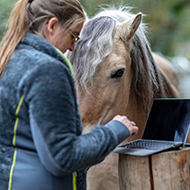ZSL and RAF collaborate for Thames seal count
The collaboration between ZSL and RAF means the charity can maximise counting accuracy while minimising disturbance.
The Zoological Society of London (ZSL) has teamed up with helicopter pilots from Royal Air Force (RAF) Shawbury in its latest count of the seal population in the Greater Thames Estuary.
The 2024 survey reveals that there were 431 harbour seals and 714 grey seals on the sandbanks of the Thames. Combined with the estimated number of seals in the water, the team believe there to be 599 harbour seals and 2,988 grey seals in total.
These numbers are consistent with those recorded in previous surveys, with the 2021 survey estimating 692 harbour seals and 3,134 grey seals.
ZSL has been conducting regular seal counts since 2013. Through regular monitoring, the conservation charity can not only record the quality of the seals’ habitat in the Greater Thames Estuary, but also develop an understanding of how seals are faring across the country.
This year’s count was conducted over several days in August, when the seals would be most likely to be basking on the estuary’s sandbanks.
ZSL’s collaboration with RAF Shawbury’s Flying School meant that their team could count from both air and sea, using a long-range lens to maximise counting accuracy while limiting disturbance.
Hannah McCormick, from the ZSL, said: “We’ve seen UK seals make an incredible recovery from the early 2000s, when high rates of distemper virus led to steep declines in numbers. Results since 2018 suggest there has been a decline in harbour seals, which has also been seen in other harbour seal colonies in the east of England.
“While the causes of these declines remain unknown, experts are investigating potential factors and by keeping a close eye on these changes we will continue to build our knowledge of seals in the Thames while contributing to long-term regional and national data on seals.”
Although the Thames was declared ‘biologically dead’ in the 1970s, ZSL’s reports have revealed that it is now home to a wide variety of British wildlife. This includes short-snouted seahorses, critically endangered European eels and both grey and harbour seals – although harbour seals are the only type of the two to breed in the area.
There is also evidence for a rise of important habitats such as carbon-capturing salt marsh.
Ms McCormick added: “From tackling pollution to planting biodiversity-boosting seagrass, we’re working to make these waterways healthy and resilient to future change. It is vital that the health and recovery of our waterways is a key government priority.”
Image © ZSL



 With Strangles Awareness Week just around the corner (5-11 May), vets are being encouraged to share a survey about the disease with their horse-owning clients.
With Strangles Awareness Week just around the corner (5-11 May), vets are being encouraged to share a survey about the disease with their horse-owning clients.